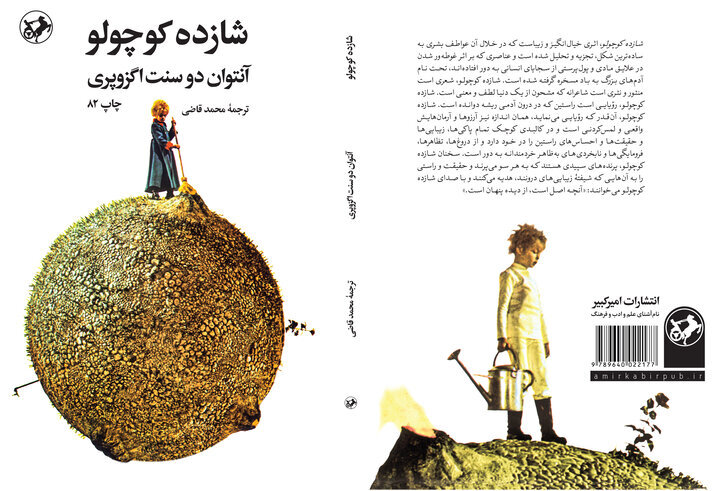Persian edition of “The Little Prince” republished

TEHRAN- The 82nd edition of the Persian translation of French writer and military pilot Antoine de Saint-Exupéry’s 1943 novella “The Little Prince” has recently been published.
Amir Kabir is the publisher of the book translated by prominent Iranian translator Mohammad Qazi. The publisher released the first edition in 1954.
"The Little Prince" tells the story of a young prince who travels from his home asteroid, B-612, to explore the universe and learn about life, love, and human nature. The narrative begins with the narrator, a stranded pilot in the Sahara Desert, who encounters the Little Prince. The prince asks the pilot to draw him a sheep, initiating a conversation that reveals the prince’s journey and insights.
As the prince recounts his story, he explains that he comes from a small asteroid where he tends to three volcanoes and his beloved rose. His rose, though unique and cherished, is also vain and demanding, leading the prince to feel lonely and confused about love. Seeking understanding, he leaves his asteroid to explore other planets.
The prince visits six other asteroids, each inhabited by a solitary adult representing various flaws of adulthood. He meets a king who believes he rules the universe, a vain man obsessed with admiration, a drunkard who drinks to forget his shame, a businessman fixated on owning stars, a geographer who values knowledge over experience, and a lamp lighter who mindlessly follows orders. Each encounter reveals the absurdities and emptiness of adult behaviors, emphasizing the prince's longing for companionship and genuine connections.
Finally, the prince arrives on Earth, where he meets a fox, who teaches him valuable lessons about relationships and emotions. The fox explains that true connections are formed through love and commitment, stating, “One sees clearly only with the heart. Anything essential is invisible to the eyes.” This profound realization leads the prince to understand the significance of his bond with his rose, as she is unique because of the love he has poured into her.
The story culminates in a poignant moment when the prince encounters a snake, representing both danger and transformation. The snake offers the prince a way to return to his asteroid, emphasizing the cyclical nature of life and death. The book concludes with the narrator reflecting on loss and the enduring nature of love and friendship.
"The Little Prince" is a philosophical tale that explores themes of childhood innocence, human relationships, and the contrast between the simplicity of a child’s perspective and the complexities of adulthood. Through the eyes of the Little Prince, readers are encouraged to reconnect with what truly matters in life: love, friendship, and the beauty of seeing the world with the heart.
"The Little Prince" is one of the most translated and best-selling books in history, with over 140 translations and 150 million copies sold worldwide. Celebrated for its profound themes and enchanting storytelling, it has garnered numerous accolades. The story’s universal appeal has led to a wide range of adaptations across various media.
SAB/
